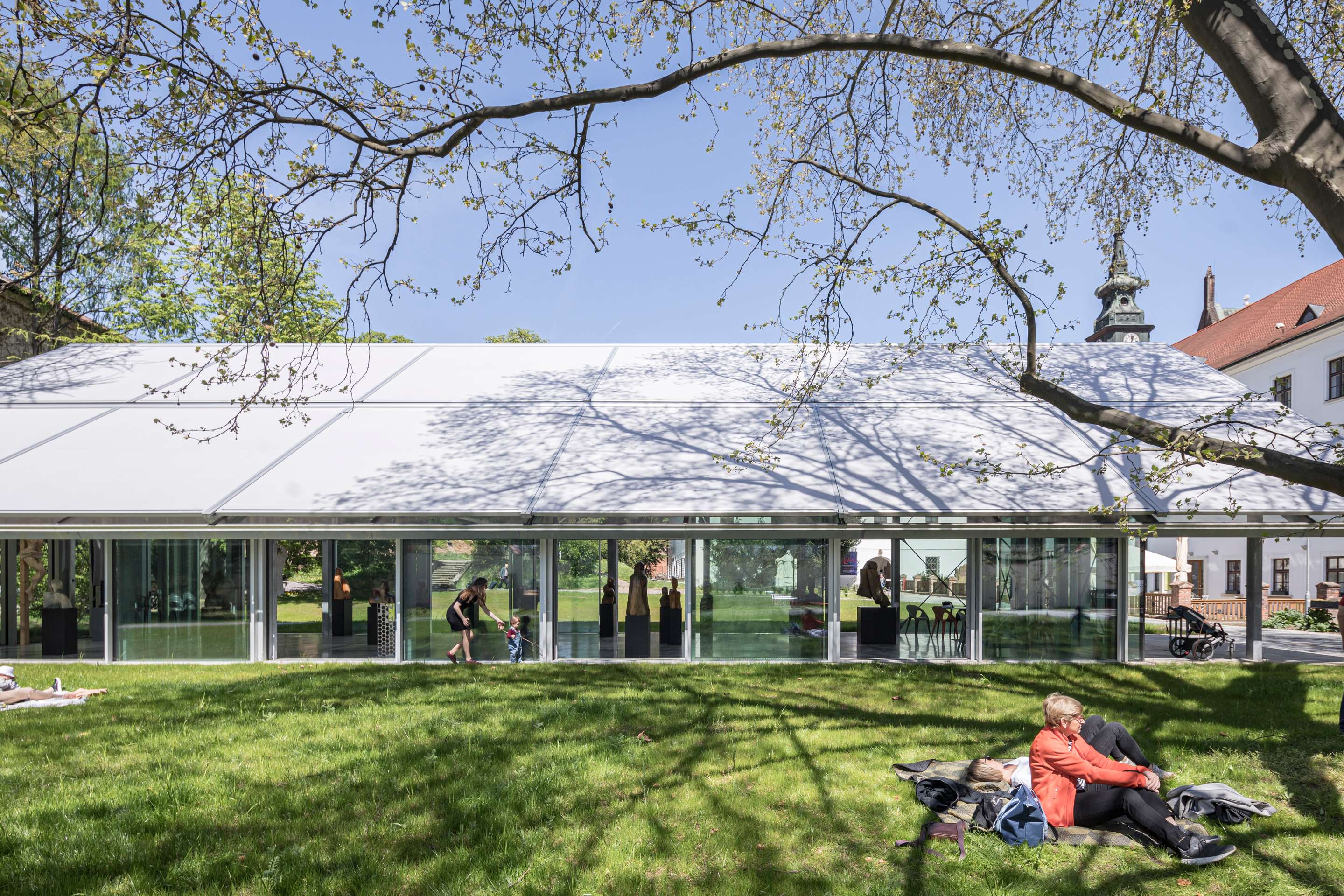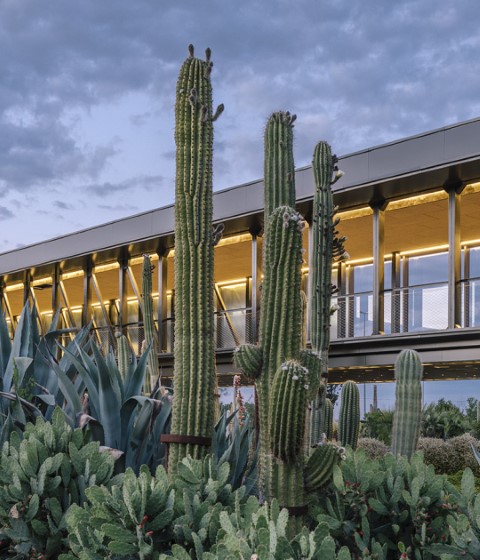The architects pay homage to scientist and abbot Gregor Mendel's work in genetics remembering the greenhouse with a novel glass and steel structure deeply rooted in the principles of Gregor Mendel’s legacy in modern genetics, emulating his drawings of the hereditary system.
Drawing inspiration from the archival materials and original scheme of the building, CHK’s design sustains the heritage value of the structure replicating its essence, simultaneously adapting it into a contemporary narrative. A key aesthetic, symbolic but also functional novelty is the reimagined supporting steel roof structure, drawing inspiration from Mendel’s three laws of inheritance. The nodes and branches constituting the steel supportive framing are in direct dialogue with his laws, in particular, that of hereditary segregation.

Mendel's Greenhouse by Chybik + Kristof. Photography by Laurian Ghinițoiu. Courtesy of Chybik + Kristof.
The construction is simple, cost-efficient, and with recyclable materials such as steel to the installment of low-carbon cooling and heating systems by the concealed structure of heat pumps.

Mendel's Greenhouse by Chybik + Kristof. Photography by Laurian Ghinițoiu. Courtesy of Chybik + Kristof.

Project description by Chybik + Kristof
Nested in the 14th-century Augustinian monastery’s gardens, the original building was swept away by a storm in the 1870s, leaving to this day only its foundations. Integrated in the structure and left visible, the preserved foundations are at the basis of the designs’ reinterpretation – echoing the orientation, shape, and distinct roof of the greenhouse. While the volume is inspired by the original edifice, the reimagined supporting steel structure seeks inspiration from Mendel’s three laws of inheritance – and the drawings of his resulting heredity system.
The flexible design, conceived to adapt to a variety of purposes, is entirely exposed to the exterior with fully open side walls, preventing any visual barriers. With the aim of attracting local and international visitors as well as a professional public essential to preserving the monastery’s legacy, the revived structure acts as a versatile space celebrating Mendel’s work and contributions to modern genetics. The vast, adaptable volume allows for a diversity of events from conferences and lectures to temporary exhibitions, while the integrated blinds enable the space to be darkened for projections and concerts.


















































